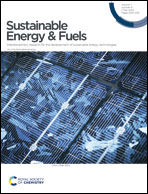Review of thermal management technology for metal hydride reaction beds
Abstract
Metal hydride (MH) hydrogen storage systems have gained interest as an efficient and safe method for hydrogen storage. An extremely high chemical reaction rate and rapid heat transfer should be the characteristics of an ideal metal hydride reactor (MHR). However, the thermal conductivity of a metal hydride bed (MHB) is only 0.1–1.5 W m−1 K−1, which poses a challenge in practical applications and makes it urgent to adopt an efficient thermal management approach. This paper reviews the development of the MHB thermal management over the past few decades, which can be divided into three parts: (1) from the MHR structure, methods like adding cooling tubes and fins are adopted to enhance the heat transfer between the MHR and the outside environment; (2) from the material perspective, thermal conductivity enhancers that include metal foams and expanded natural graphite (ENG) are introduced to the MHB to improve the effective thermal conductivity of the MHB; and (3) a phase change material (PCM) is employed to strengthen the heat transformation inside the MHB and reduce the energy loss. This research is focused on evaluating the impact of various thermal management measures on heat and mass transfer and comparing their heat transfer effectiveness, summarizing the benefits and drawbacks of different MHR structures. Finally, some views on the future designs of MHBs are proposed.



 Please wait while we load your content...
Please wait while we load your content...